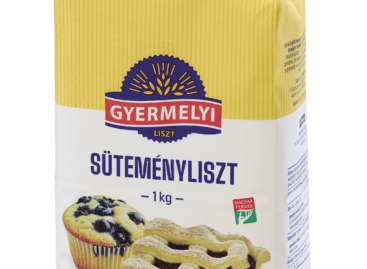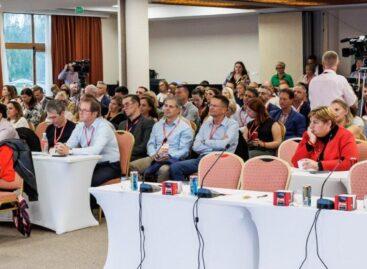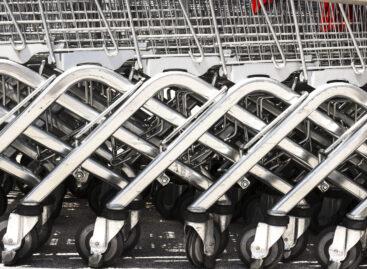A fragile balance
This article is available for reading in Trade magazin 2025/2-3.

Gábor Bokros
marketing director
Gyermelyi
Gábor Bokros, marketing director of Gyermelyi Zrt. reports that after last year’s Easter period the demand for eggs dropped – in line with the trends – and it only returned to its usual level very slowly.
“Unfortunately, the autumn outbreak of avian flu was intense and widespread. Forced hen culling reduced the quantity of eggs available, while demand continued to grow, quickly creating a shortage of supply”,
he adds.
Demand from retail chains for eggs from alternative farming is on the rise, but consumers are still less keen to buy this type of egg. Increasing the number of these types of farms will require major investment, which will put a heavy financial burden on producers. This and the higher cost price of alternative eggs will drive prices up. Gyermelyi Group will be expanding its laying hen flock significantly in the near future.
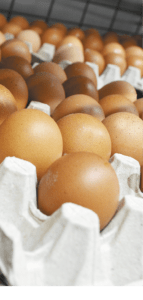
The market has been hit by a number of price drivers in recent times, from rising feed and packaging costs to labour costs and avian flu
Expanding alternative production

Dr. Tamás Kertész
managing director
Farm Tojás
Dr Tamás Kertész, managing director of Farm Tojás Kft. believes that egg consumption is gradually increasing, but hasn’t yet returned to the level of the “golden age” when annual consumption was above 300 eggs per capita – currently this figure is around 245.
“Egg prices have climbed a little recently, but they are still one of the cheapest foodstuffs on a per capita basis. Hungarian producers are able to ensure domestic supply for most of the year, but in peak periods like Easter egg import is necessary”,
points out Dr Tamás Kertész.
Farm Tojás is steadily increasing alternative production, which is already way above the level of cage production. They have been marketing Omega and GMO-free eggs for several years.
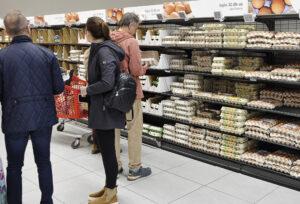
A magyar termelők az év nagy részében képesek biztosítani a hazai ellátást, de a kiemelt időszakokban importtojásra is szükség van
Top quality

Csaba Kollár
director
Hírös Farm
Csaba Kollár, director of Hírös Farm Kft. opines that consumers have become even more price-sensitive. He is of the opinion that the influx of low-quality cheap eggs (e.g. from Ukraine) and eggs with a false place of origin marketed as if they were from the EU – entering the EU duty-free – is causing significant market disruption.
“Our situation is better than the sector’s average, as we produce to a higher professional standard and we are more efficient. Hírös Farm’s staple products already represent a quality that is only available elsewhere in the premium category and at a premium price”,
informs Csaba Kollár.
The company is committed to the Hungarian Product trademark scheme and all their products will soon be trademarked. //

There is a growing demand from retail chains for eggs from alternative farming, but this not yet reflects mass consumer demand
Steady recovery in household consumption
Egg volume sales dropped 14% from 2021 to 2022, while prices doubled by the end of 2022 from the HUF 40/piece in 2021. However, the following two years brought a 3-4% increase in annual volume sales, partly underpinned by a modest but steady price fall, which has stabilised at around HUF 60 Ft/piece over the last 4 quarters.


Guest writer:
Albert Szőke
senior consultant
YouGov CP Hungary
Although eggs are a staple food, not everyone buys them. On an annual basis 86-88% of households purchase eggs. The annual penetration of the category is around the average level of 88% for each demographic group (Mat Nov/24), i.e. irrespective of household size, age of the housewife or income status. As regards purchasing intensity (annual amount purchased), there is a greater separation between demographic groups: there are big differences by household size, life cycle and income. The average shopper buys eggs 13 times a year, adding 17-18 eggs to the basket on occasion. Currently almost half of the eggs are purchased in discount supermarkets. //
Related news
Gyermelyi Cake Flour
🎧 Hallgasd a cikket: Lejátszás Szünet Folytatás Leállítás Nyelv: Auto…
Read more >Brand Footprint – the celebration of brands
🎧 Hallgasd a cikket: Lejátszás Szünet Folytatás Leállítás Nyelv: Auto…
Read more >We took you on a flight! (Part 2)
🎧 Hallgasd a cikket: Lejátszás Szünet Folytatás Leállítás Nyelv: Auto…
Read more >Related news
Christmas shock in commerce: for the first time, we can pay with bank cards in fewer places
🎧 Hallgasd a cikket: Lejátszás Szünet Folytatás Leállítás Nyelv: Auto…
Read more >Hungarian Confectionery Manufacturers Association: trends in 2025 and prospects for 2026
🎧 Hallgasd a cikket: Lejátszás Szünet Folytatás Leállítás Nyelv: Auto…
Read more >Most grocery chains will be open until noon on December 24th
🎧 Hallgasd a cikket: Lejátszás Szünet Folytatás Leállítás Nyelv: Auto…
Read more >
